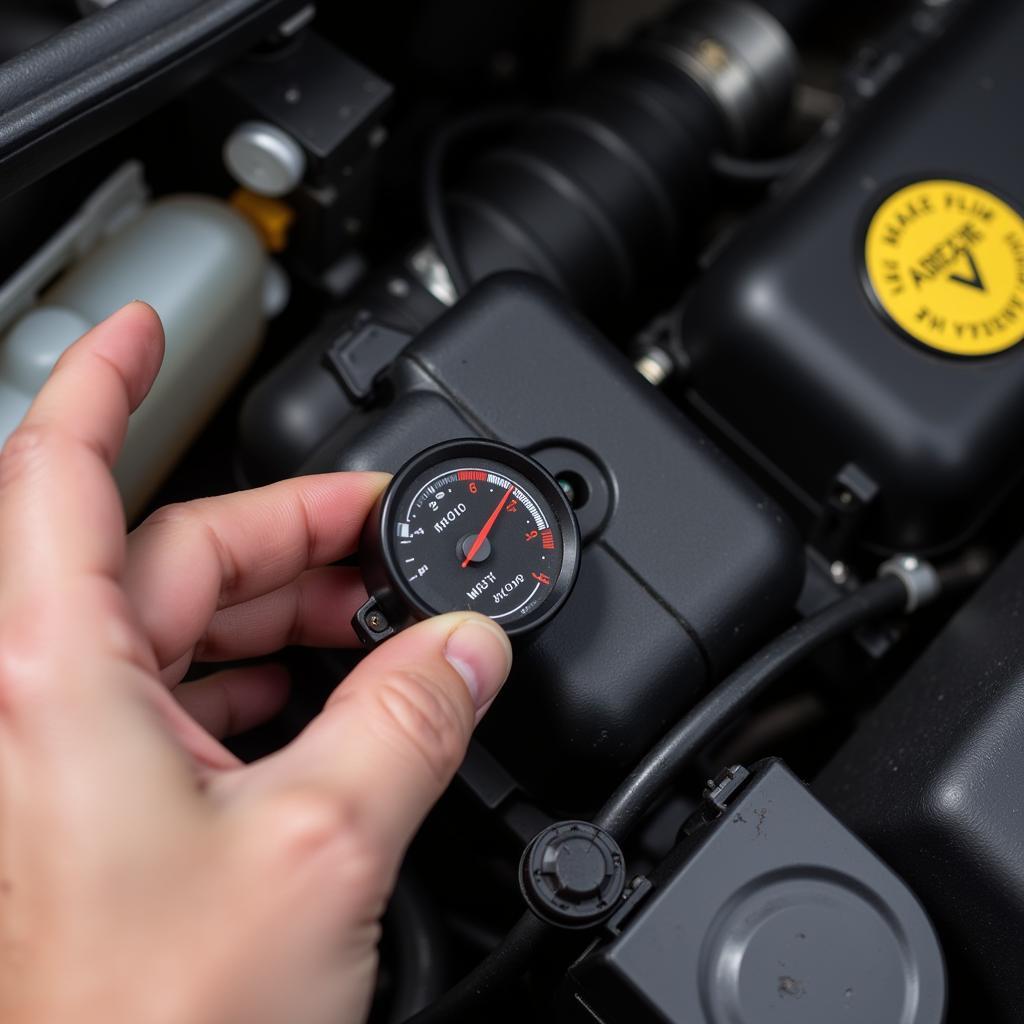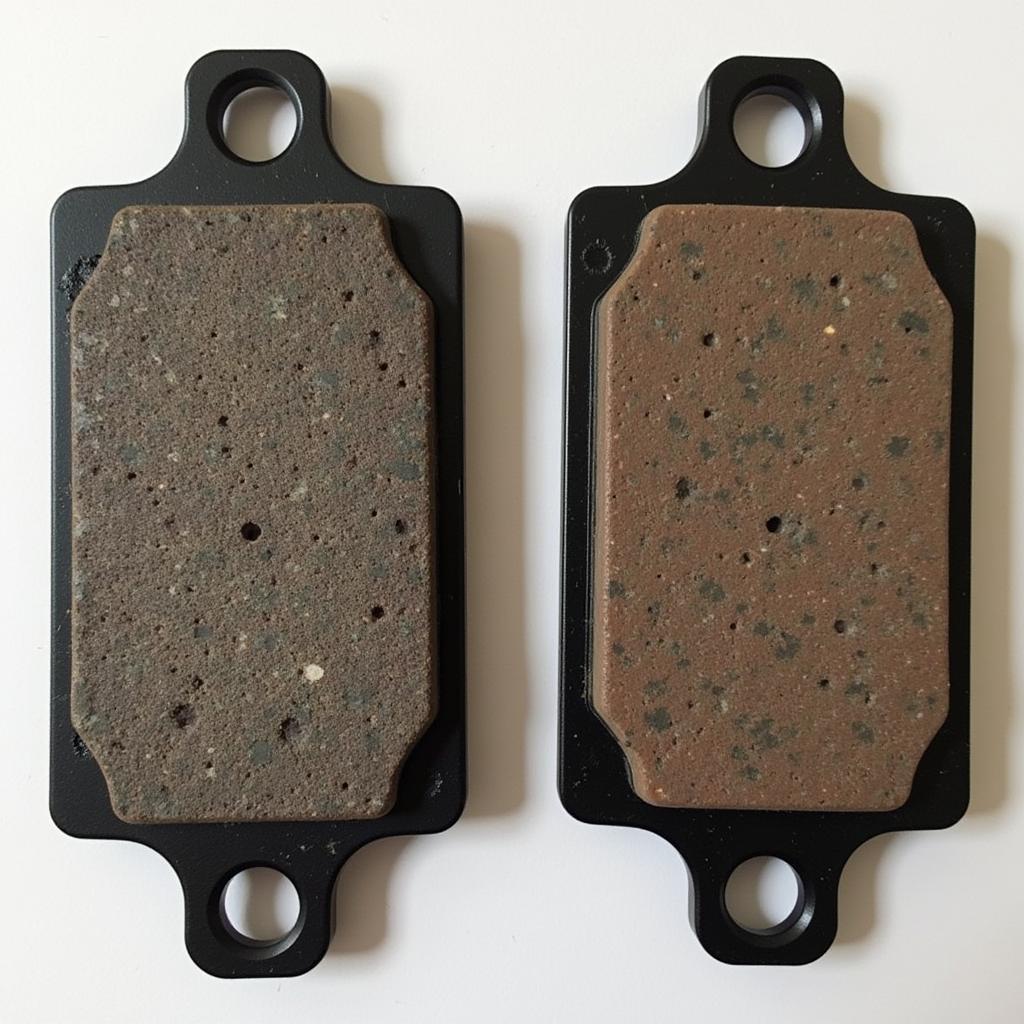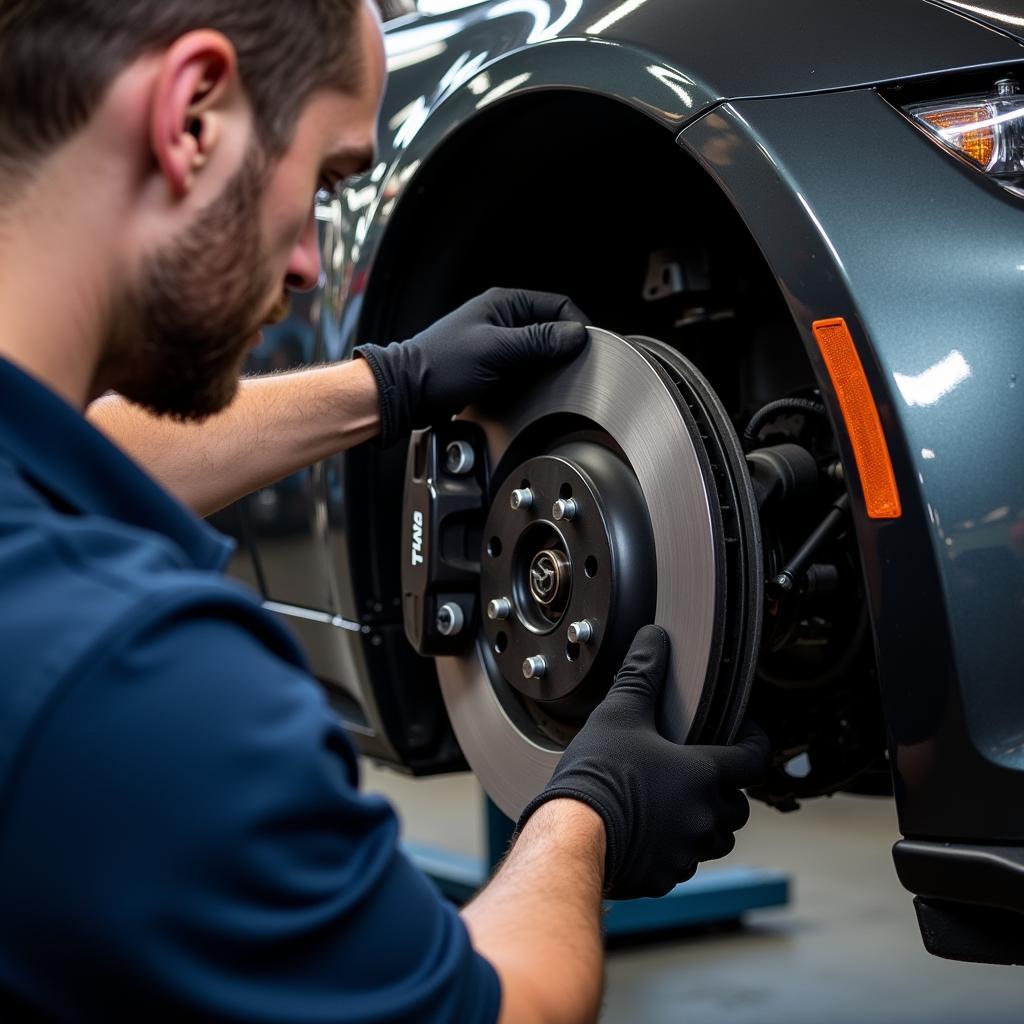A glowing brake warning light on your Mazda MX-5 dashboard can be a nerve-wracking experience. While it might seem like a reason to panic, it’s crucial to understand that this light serves as your car’s way of communicating a potential issue with your braking system. This article will guide you through the common causes of a Mazda MX-5 brake warning light and offer potential solutions to get you back on the road safely.
Understanding Your Mazda MX-5 Brake Warning Light
The brake warning light, often symbolized by an exclamation mark within a circle or parentheses, is designed to illuminate when your car’s computer detects an anomaly in the braking system. While it can indicate a serious problem, it can also be triggered by something as simple as engaging the parking brake.
Common Causes of a Mazda MX-5 Brake Warning Light
Let’s delve into the most common reasons why your Mazda MX-5 brake warning light might be on:
1. Low Brake Fluid Level
The most common culprit behind a brake warning light is low brake fluid. Your car needs a sufficient amount of brake fluid to generate the hydraulic pressure necessary to apply the brakes. A leak in the system or worn-down brake pads can lead to a drop in fluid level.
 Checking the Brake Fluid Reservoir
Checking the Brake Fluid Reservoir
2. Worn Brake Pads
Brake pads are designed to wear down over time with regular use. Once they reach a certain thickness, your Mazda MX-5’s brake pad sensor will trigger the warning light. This indicates it’s time for a brake pad replacement.
 Worn Brake Pads on a Mazda MX-5
Worn Brake Pads on a Mazda MX-5
3. Faulty Brake Light Switch
The brake light switch, located under the brake pedal, is responsible for activating your brake lights when you press the pedal. A malfunctioning brake light switch can sometimes interfere with the brake warning light system.
4. ABS Issue
If your Mazda MX-5 is equipped with an Anti-lock Braking System (ABS), a problem with this system can also trigger the brake warning light. This could be due to a faulty ABS sensor, a malfunctioning ABS module, or issues with the wiring.
5. Parking Brake Engaged
It may seem obvious, but a surprisingly common reason for the brake warning light is an engaged parking brake. Always double-check that your parking brake is fully disengaged before panicking.
Troubleshooting Your Mazda MX-5 Brake Warning Light
If your brake warning light comes on, it’s crucial to take immediate action to diagnose and address the problem. Here’s a step-by-step guide:
-
Check Your Parking Brake: Ensure your parking brake is fully released. If the light turns off, you’re good to go.
-
Inspect Brake Fluid Level: Carefully open the brake fluid reservoir (refer to your owner’s manual for its location). Check if the fluid level is within the “Min” and “Max” marks.
-
Visually Inspect Brake System: Look for any signs of leakage around the brake lines, calipers, and wheel cylinders.
-
Seek Professional Help: If you notice a low brake fluid level, signs of leakage, or if the light remains on despite checking the parking brake, it’s crucial to have your vehicle inspected by a qualified mechanic immediately.
 Mechanic Inspecting Mazda MX-5 Brakes
Mechanic Inspecting Mazda MX-5 Brakes
Remote Diagnostic and Programming Solutions
In today’s technologically advanced world, remote diagnostic and programming services are emerging as viable solutions for certain car problems. These services, offered by specialized companies, utilize cutting-edge technology to remotely access your vehicle’s computer system, diagnose the issue, and even upload software updates or reprogramming modules.
“Remote diagnostics can be particularly beneficial for addressing issues related to the ABS system or other electronically controlled components of the braking system,” says John Smith, Senior Automotive Engineer at XYZ Automotive Solutions.
However, it’s essential to note that not all brake warning light issues can be resolved remotely. Mechanical problems, such as worn brake pads or fluid leaks, will still require hands-on inspection and repair by a qualified technician.
Conclusion
A glowing brake warning light on your Mazda MX-5 should never be ignored. While it could be something as simple as an engaged parking brake, it could also indicate a more serious issue with your braking system. Understanding the common causes and following the troubleshooting steps outlined in this article can help you address the problem effectively or guide you to seek professional help promptly. Remember, a well-maintained braking system is paramount for your safety and the safety of others on the road.
